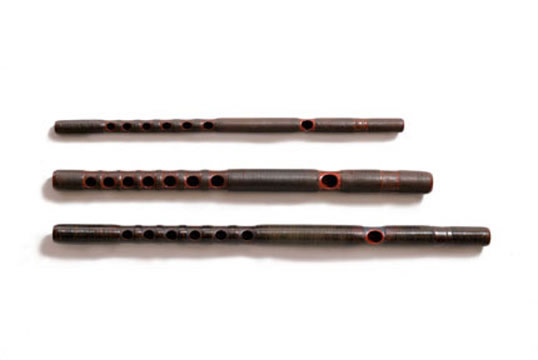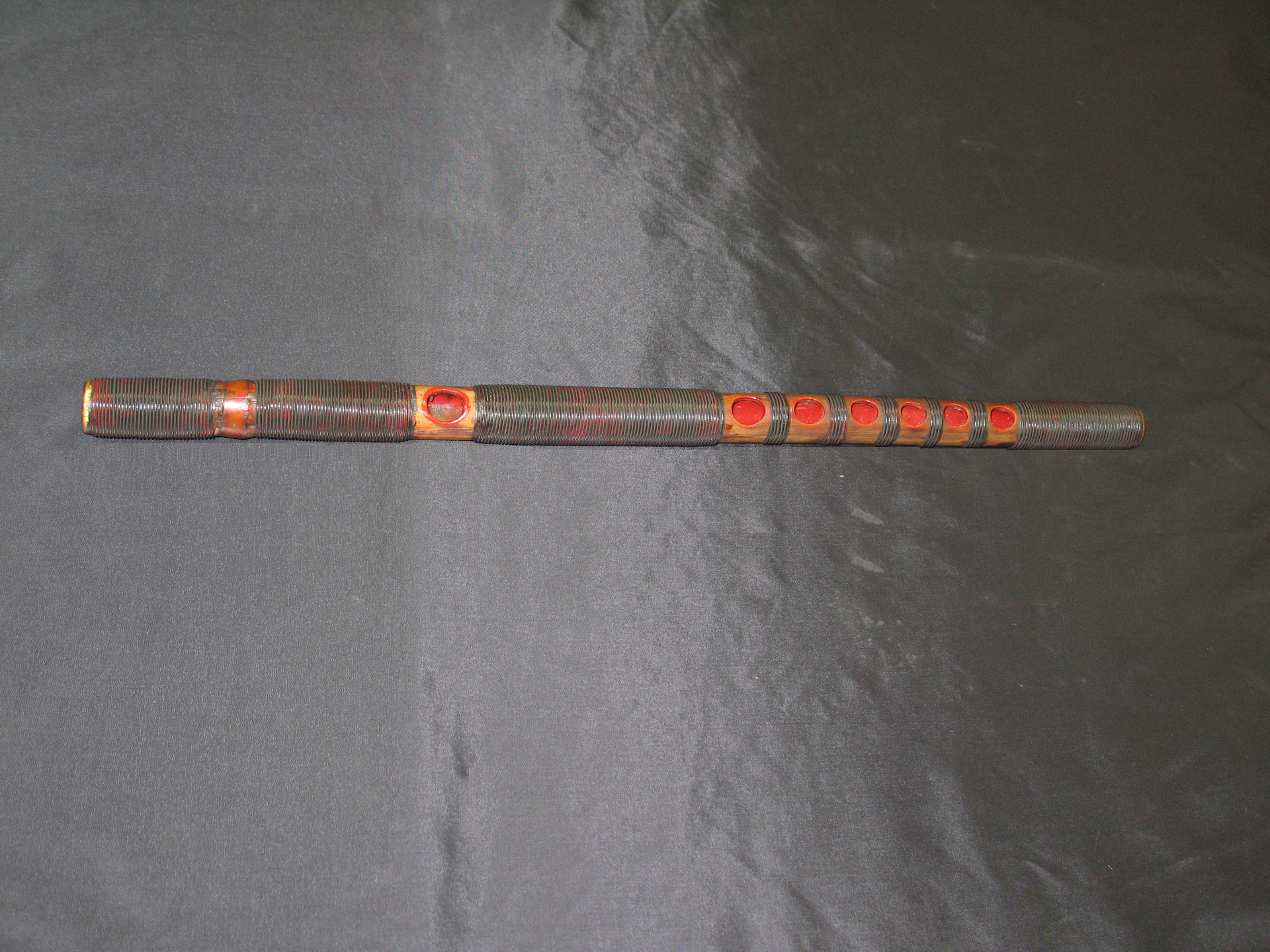Traditionally, musicians from the gagaku orchestra perform any repertoire from gagaku’s three main bodies of music and dance. A few other woodwind instruments are used in these works, such as: kagurabue and komabue.
 From bottom to top: kagurabue, ryūteki, and komabue
From bottom to top: kagurabue, ryūteki, and komabue
Figure 1
Kagurabue
This is a six-holed transverse flute made of bamboo. It is approximately 45 cm long (18 inches). With the exception of the mouth and finger holes, the entire instrument is wrapped in birch or cherry bark, and then lacquered. This flute is used in the accompaniment of kagura-uta.
Tuning and transposition
The kagurabue sounds one octave higher than written, and it is tuned to an A-430Hz.
Range
This instrument has a range of 2 octaves. The kagurabue does not have an octave-hole, so over-blowing the pitches of the lower octave is the only technique to produce notes an octave higher. The pitches shown in whole notes are playable by opening/closing the instrument’s six holes, while the ones shown in black are produced by half-holing or breath manipulation.
 Range of the kagurabue
Range of the kagurabue
Figure 2
Komabue
This is a six-holed transverse flute made of bamboo. It is approximately 37 cm long (14.5 inches). It is used in komagaku music that originated from Korea, which is often played as a dance accompaniment. It is very similar to the kagurabue, but it is much thinner, it replaces the latter in the performance of azuma asobi.
 Komabue
Komabue
Figure 3
Tuning and transposition
The komabue sounds one octave higher than written, and it is tuned to an A-430Hz.
Range
Its range slightly exceeds 2 octaves. The pitches shown in Figure 4 in whole notes are playable by opening/closing the instrument’s six holes, and the ones shown in black are produced by half-holing or breath manipulation. Again, over-blowing the pitches of the lower octave produces those of the 2nd and 3rd octaves.
 Range of the komabue
Range of the komabue
Figure 4